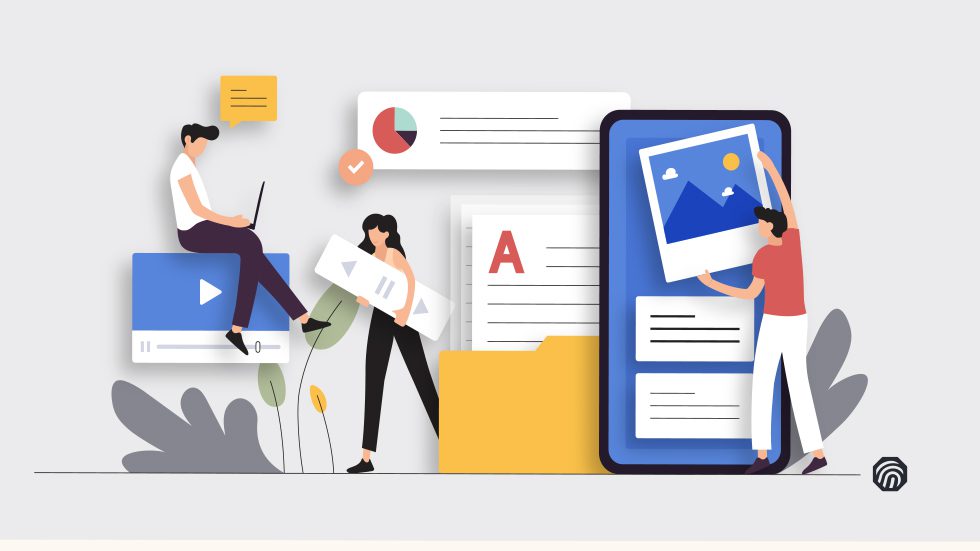As much time and effort as your marketing team puts into content, sometimes the results are not what you hoped. There are many reasons your brand’s content may not be performing well, such as miscommunication with retailers, low-quality visual content, poor timing, or missed SEO opportunities. In this blog post, we’ll help you identify where your content can improve — especially on social media — and how to work with retailers. We’ll also explain how you can make the most of your brand’s content investment through social media content syndication.
Why Your Brand’s Content Sometimes Falls Flat
First, let’s look at some of the reasons your content may not achieve the goals you’ve set for it.
Bad Timing or Targeting
The greatest content in the world won’t make an impact on an audience who never sees it. Social media algorithms can be tricky to understand and use to your advantage. It takes testing to discover what kinds of social media content, posted at what times, shows in the feeds of your intended audience. You may also be limiting your reach by posting too infrequently, at the wrong times of day, or on the wrong platforms.
Poor Quality Images
Less-than-stellar images, cropped or modified product photos, old or pixelated versions of your logos, and other content of poor quality can affect content performance. If you work with retailers to share your brand’s content, they may not be sharing the best versions with their audience. Even if it’s not used intentionally, poor quality content can seriously harm your brand image. It can damage your conversions, too. More than 90% of consumers consider visual appearance as a key factor in their purchase decisions.
Lack of Reach
Many brands invest heavily in great content, like product imagery, clever how-to videos or valuable blog posts. That content might live on your website, dependent on search engines to lead people to it. However, you don’t have to wait for the audience to come to you. You can share and amplify it through content syndication.
What is Social Media Content Syndication?
Social media content syndication is a digital marketing practice that repurposes a piece of your own content across different platforms.

For example, a bike shop brand might write a longform blog post about the best bike for different types of terrain. With social media content syndication, that same blog post can be shared across multiple social media accounts to reach your audience in new ways. Instead of just living on a retailer’s site, that single piece of content gets a ton of traction when syndicated socially.
You could even repurpose the blog post into different types of social posts, to be dispersed across multiple social accounts. For example, the blog post could be broken up into six different social posts, spotlighting each different bike. Each post shared on Facebook might focus on the bike features in the copy, while the same post on Instagram may use different images of the bikes on said terrain. With minimal adjustments to visuals or copy, one piece of content can effectively be recycled multiple times.
Benefits of Social Media Content Syndication
Using social media content syndication gives content posted on one social media platform has an even higher chance of engaging your audience — and getting conversions — on another platform. If your content doesn’t perform so well on LinkedIn, for example, it may really shine on Twitter instead. You can even gain followers who discover your social media channels through other platforms. Social media content syndication allows your content to reach its fullest potential.
Social media content syndication also cuts down on time spent creating content from scratch. Once a fresh piece of content is complete, you know that it will serve multiple purposes across your social media accounts.
A major advantage of syndication is the ability to target local audiences by sharing your content with your retailers. Most retail stores engage with their communities using one or more social media platforms, and they may be starving for quality content. By making your content available to them, you reach more potential customers and ensure the integrity of your brand. You’ll also have control over the quality of the content — from the visuals to the captions — when you use a social media syndication tool like ThumbStopper.
Help Your Content Investment Go Further with ThumbStopper
How do you know which publications or retailers get the most traction for your brand? How can your syndicated content avoid bad timing and algorithm miscalculations? How do you ensure that your content doesn’t fall flat in the hands of retailers?
Thumbstopper’s content distribution platform can tackle these problems for you. ThumbStopper’s Brand Manager™ stores your brand’s digital assets and effectively distributes content automatically. Upload your own content to ensure your products or services are represented in the exact way that you want. Better yet, allow ThumbStopper to automatically aggregate content from your platforms.
With ThumbStopper’s Brand Manager™, you can focus on creating engaging, strong content. Thumbstopper takes care of the tedious distribution and syndication parts, to your brand’s success. Learn more about ThumbStopper’s brand services today.




